Now here is something you don’t get to drive everyday, a shooting brake, which is essentially a sporty wagon.
This particular model, the Taycan 4S Cross Turismo, hints at off road potential with its plastic wheel arch surrounds and 20mm rise in ride height over the Taycan.
Why there’s even a Gravel mode you can select via the rotating knob attached to the wheel. This raises ride height by a further 10mm and changes TC settings to optimise drive for when you might be heading to, say, Te Arai Public Golf Course.
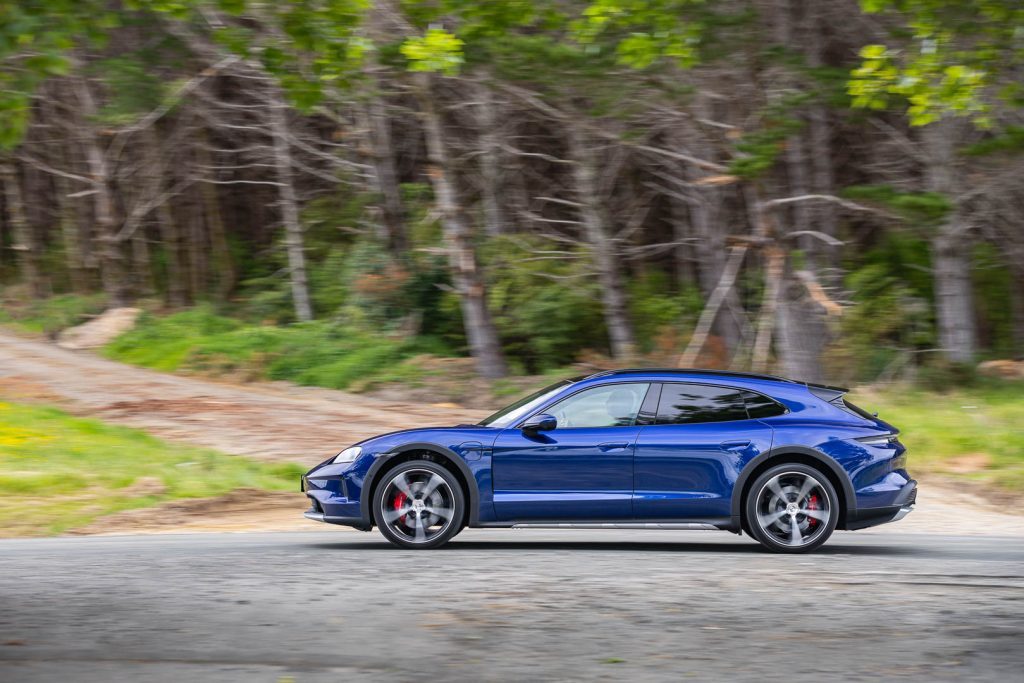
From tarmac, you’re suddenly on unruly gravel roads. Not that the standard AWD and air suspension wouldn’t have also done a sterling job under such conditions.
There’s another setting for urban kerb hopping to save the front apron from being dislodged.
So yes, this is more the sporty wagon than an off-road Taycan. Essentially it has an elongated roof line that affords another 50mm of headroom in the rear and a bit more luggage space.
All three Cross Turismo models come with a fixed panoramic sunroof and air springs so they are slightly better specified than the regular Porsche Taycans and a jot more expensive.
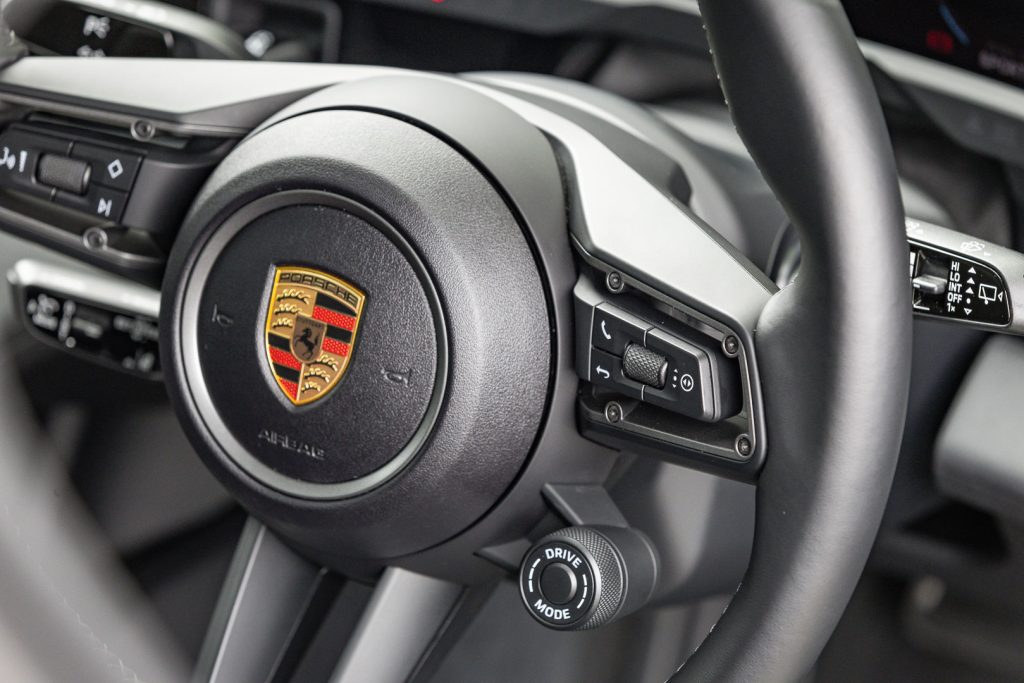
The reason we’re driving this is that it is a facelift model. The most important update is a more energy dense cell chemistry that’s said to lift range from the 98kWh (usable) battery pack by around one-third.
In the case of the 4S, which is the middle model in the line-up, it takes WLTP range to between 450 and 600km, depending on what you read. Our limited experience suggests around 500km real world.
Other changes include a new rear motor and fresh headlights. They’ve also removed the vertical slits that made it look like the previous Taycan was crying. This is a unique look and it grows on you.
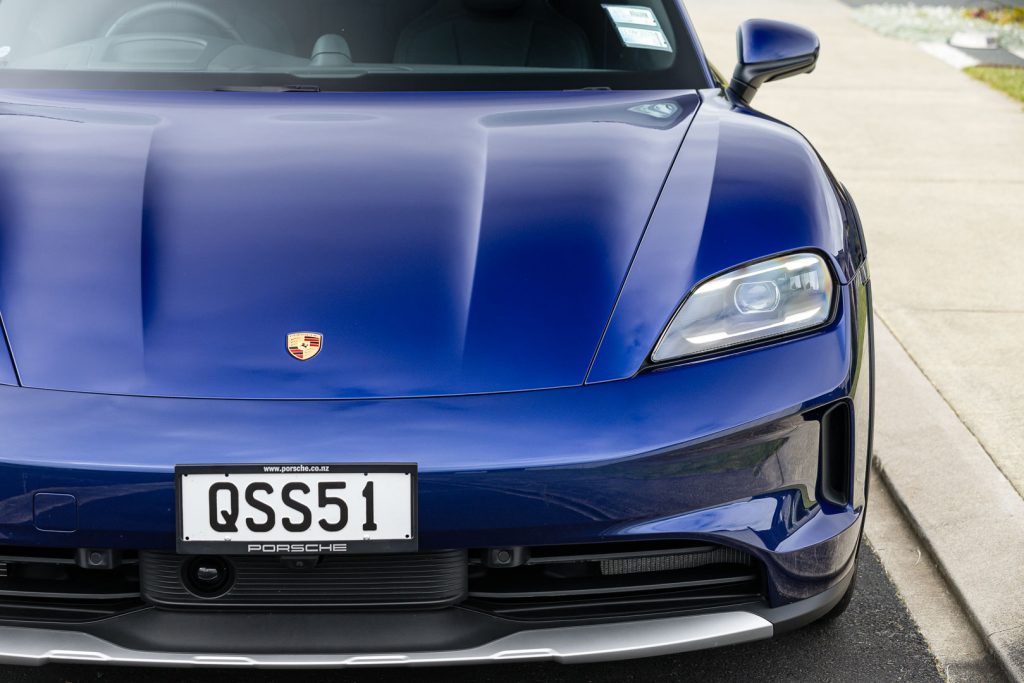
Yes there are typical Porsche features, like the swollen hips back and front, the telltale lights. Looking out over the short bonnet are 911-like fender flares, only these have a little ridge atop them.
The CT features aprons with bash plates that make it seem as if it might disappear off road at any moment.
One look at the tyres though and you’ll think otherwise. These are more on track than beaten track oriented. Our particular car was wearing $7k of optional 21-inch rims and Goodyear Eagle F1 rubber.
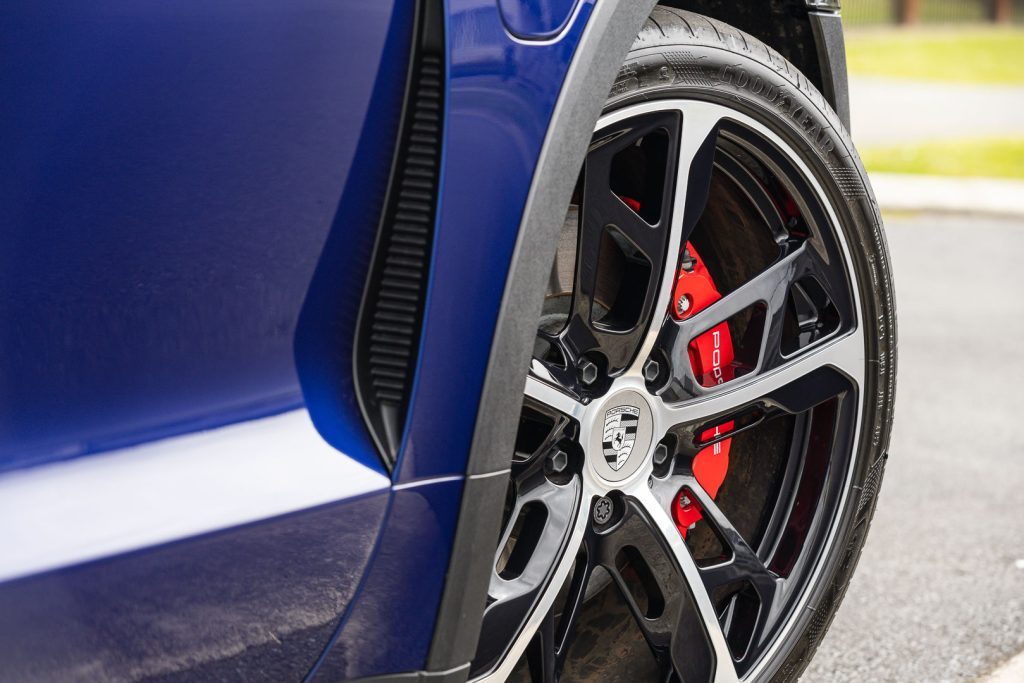
This is a low flyer, with a roof height of 1409mm. Despite that, and a wide sill and heavily bolstered seats, entry into the front isn’t too bad.
But it’s not quite so easy in the back where access is tighter, especially if the front seats are set back and then knee room is at a premium.
Our car had the three-seat option in the back. That’s probably one you’d overlook unless you genuinely needed to carry three grandkids.
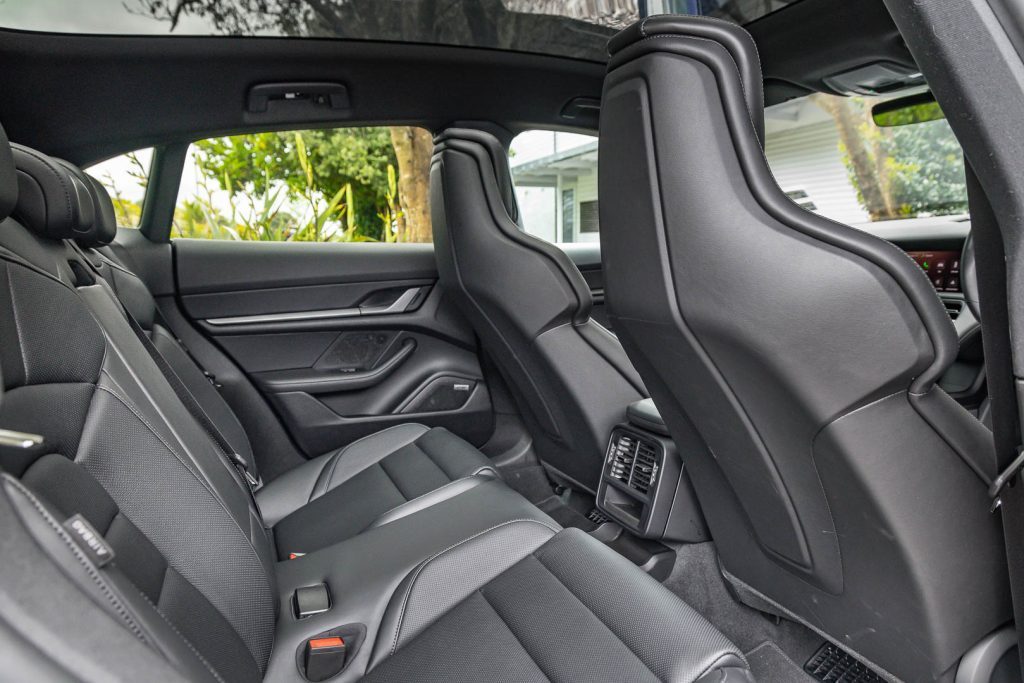
All three CTs are AWD machines. The base car kicks things off at $236,750. It needs about 4.7sec to get from zero into trouble. For not a whole lot more, $19k, you can climb into this baby ($255,850) and subtract around a second from the base car. JUST. DO. IT.
Porsche rates its sprint time at 3.8sec using launch control. Take that with a grain of salt. As an insider says, “Porsche underpromises and overdelivers”.
We found that even without launch control we could just squeak under 3.8sec (3.72sec) for the 0-100 test. But it definitely feels feistier when launch control is activated.
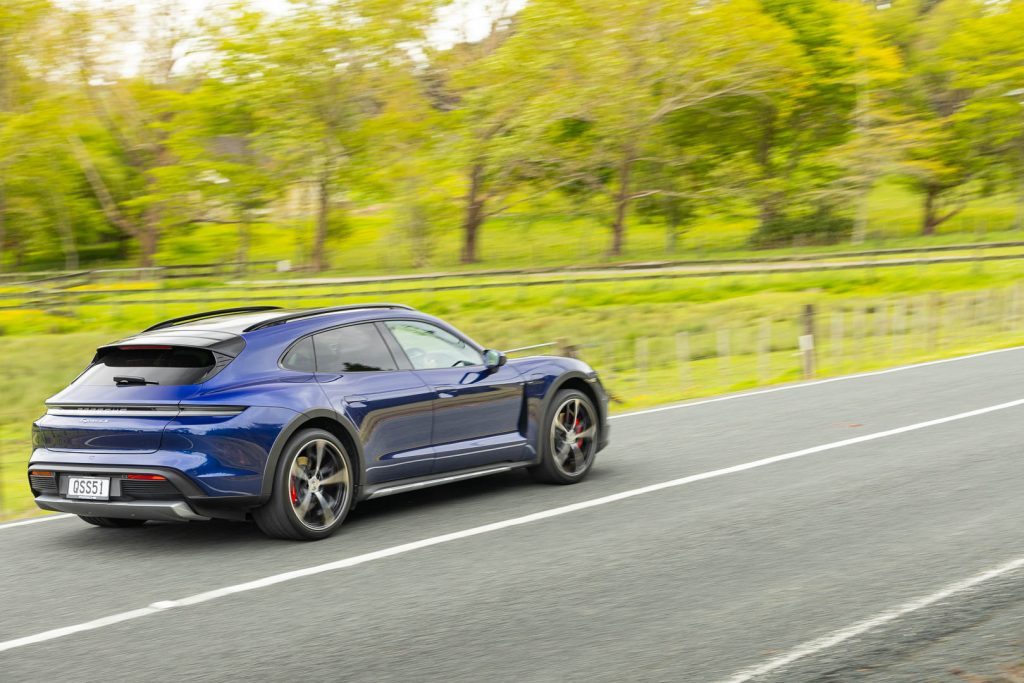
That’s when you get 440kW of system power instead of the regular 380kW, and 710Nm instead of 650Nm.
And indeed we recorded a best figure of 3.30sec, repeatedly. Yes, this may seem like an error on our part but we found that others had recorded 3.5sec 0-100 times in the original generation which had 420kW and 650Nm.
So our best is in line with theirs, considering the latest model has extra output on ‘overboost’, whatever that might mean in something without a turbo.
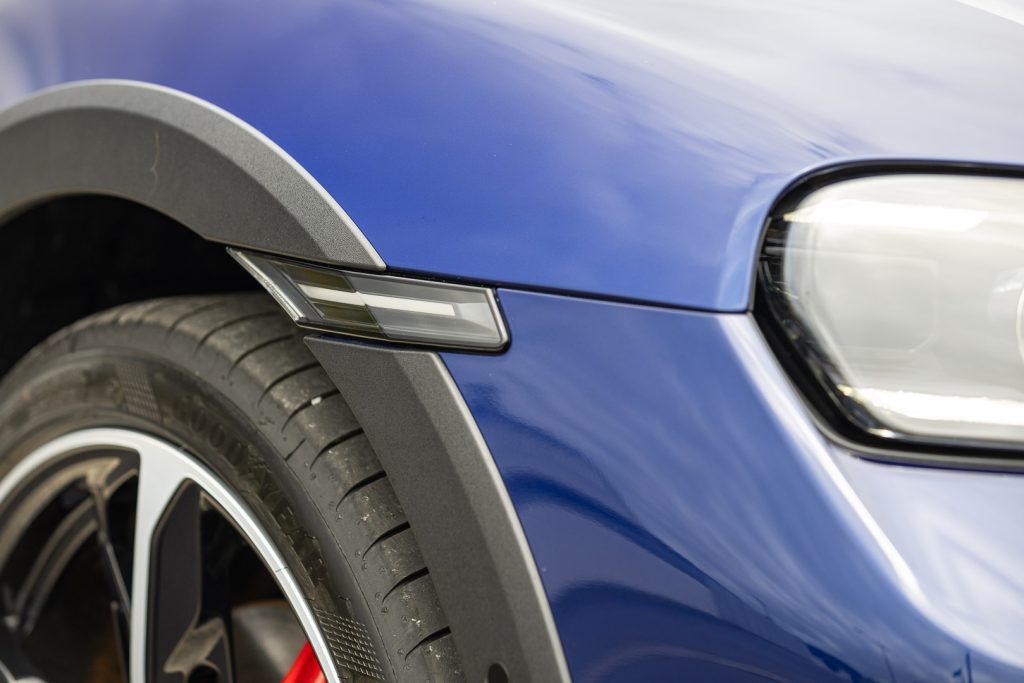
It’s the same story with the overtake. We couldn’t quite match Porsche’s claim of 2.1sec for the 80-120 overtake without launch control (2.2sec) but with it we managed two runs of 1.90sec.
Both guys I spoke with at the Porsche dealership said 3.8sec is “just a number” and they too felt it was significantly quicker. Well, they’re not wrong.
They also felt that the 4S is the sweet spot in the range and it’s hard to argue with that.
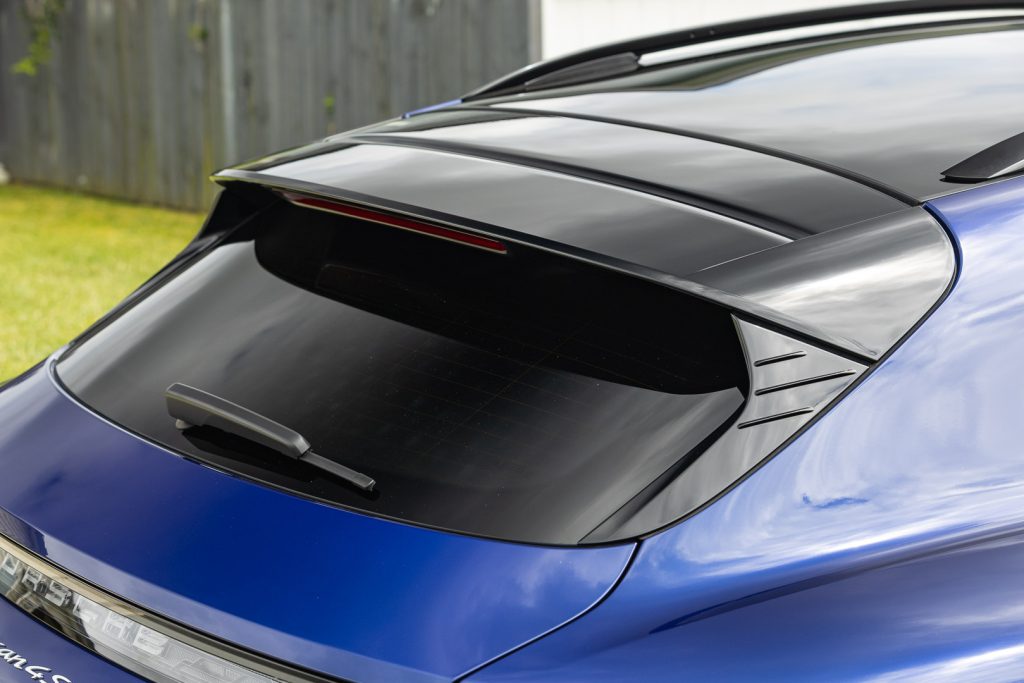
To subtract another half a second of performance from the two criteria we use, you need to shell out an extra $96k ($351,950) for the Taycan Turbo Cross Turismo. Which is a fair amount more than the upgrade from the Taycan 4 to 4S CT.
This has numerous operating levels but even the one to eke out more range offers plenty of firepower. As we typically find, Normal is perfect middle ground.
It’s so quiet in operation too, just a whir really, and the extra rubber is the reason this registered a worst cabin SPL level of 74dB.
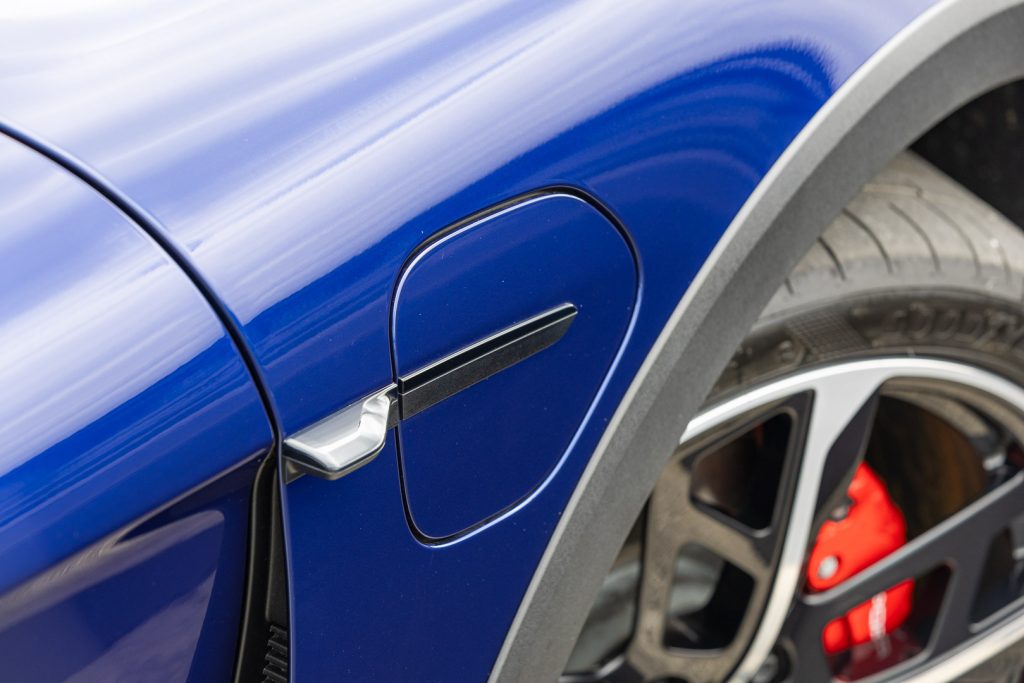
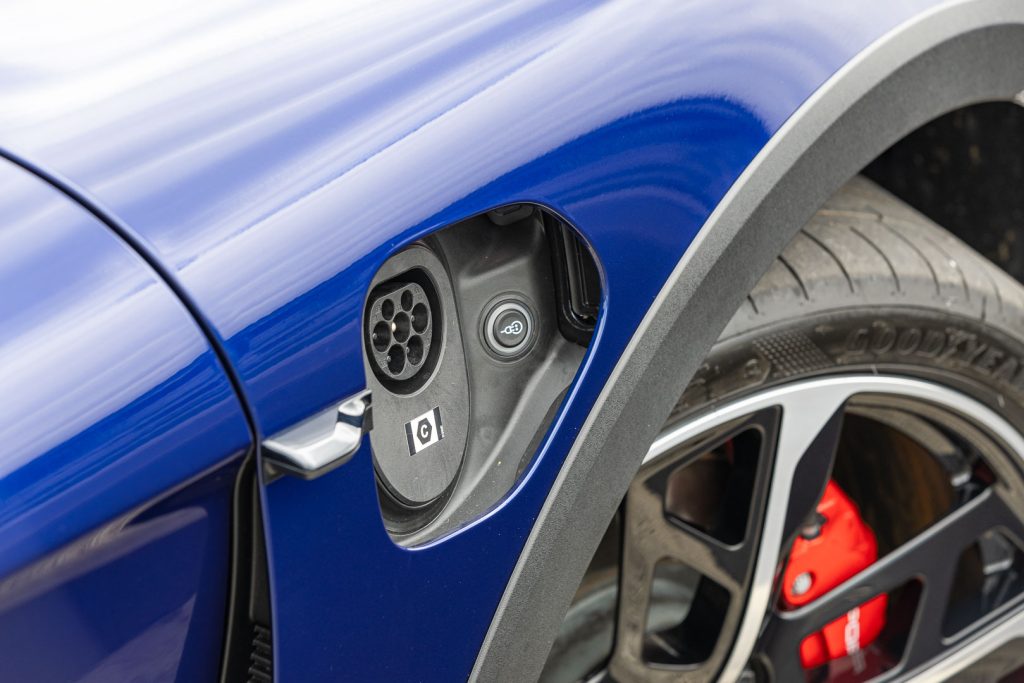
Unusually there’s little in the way of regeneration settings. Essentially minimal or none so we left it on auto. That also means you rely primarily on Active Cruise or brakes for slowing this.
And they have great pedal feel. Stopping distances are decent – the best was 33m – but hardly standout like for some Porsches (we’re thinking 911s here).
That’s largely because of its overall 2280kg kerb weight. Rest assured though, they are good picks.
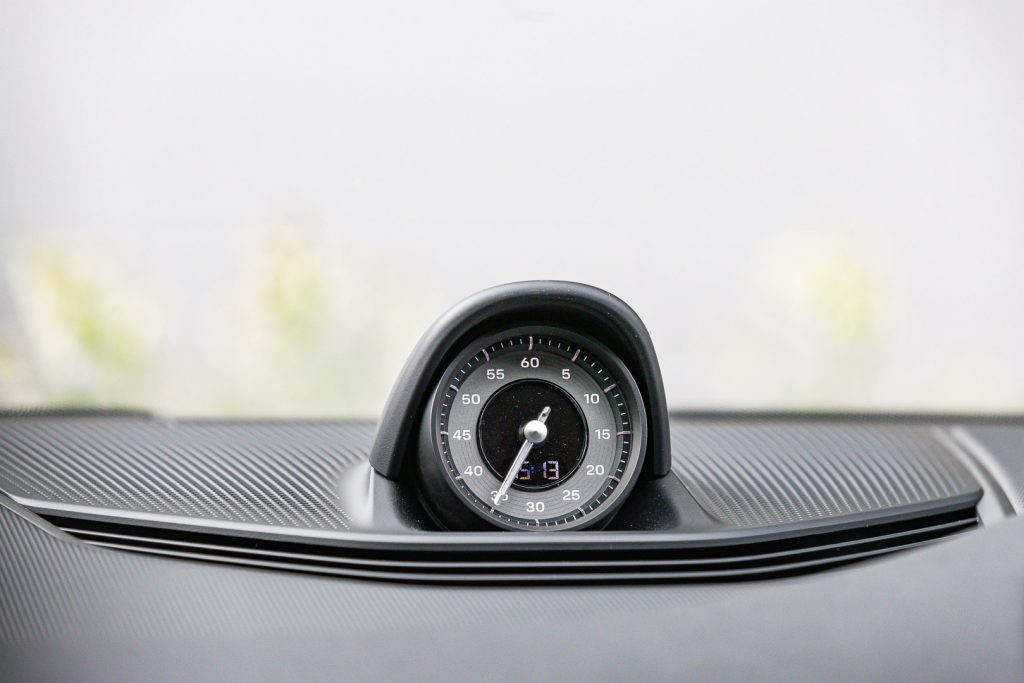
On road, this is the proverbial limpet, especially with the extra rubber. This simply rails through bends, more especially in the Sport modes, but it’s perfectly brilliant in the Normal suspension setting too.
You can mix and match suspension settings to drive modes, so up the body control a bit with Sport, while leaving drive in Normal.
You’d not credit the corner speeds this maintains, telegraphing when you’re approaching grip limits with a gentle progression into understeer that responds to a throttle lift.
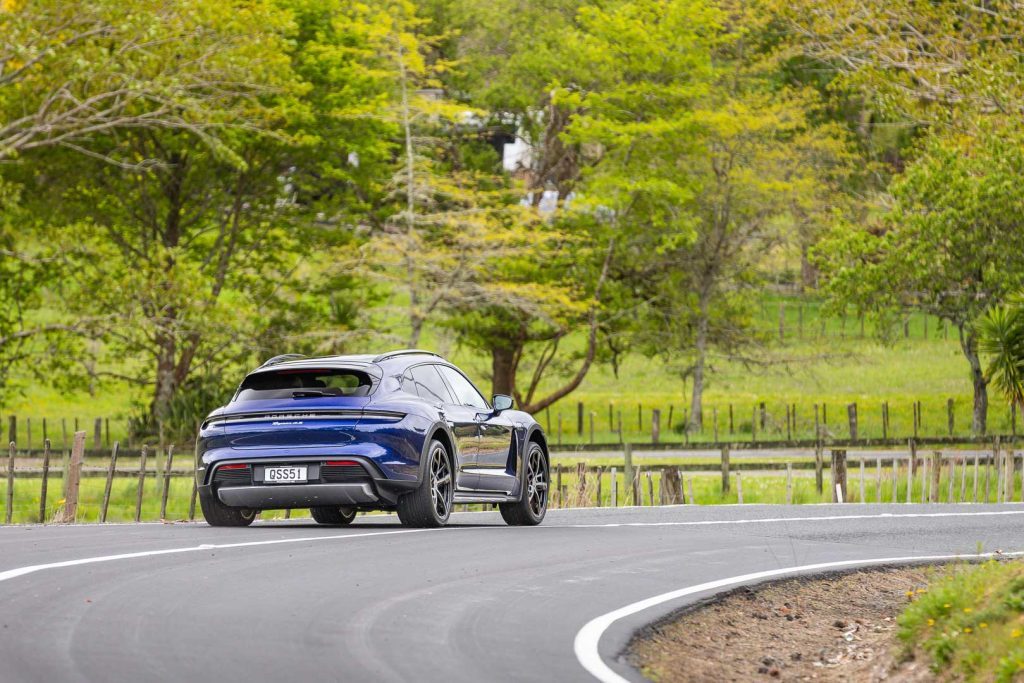
Even at the limit the ESP intervention is scarcely noticeable, and you can dial that down too if you so choose.
On slower corners if you add throttle it will round up into the bend, led by power to the rear, but that doesn’t work in faster stuff. You can only imagine how agile this might be with the optional rear axle steering.
With air suspenders the ride is only ever forgiving, and even the Sport Plus mode doesn’t feel overdone. So this lends itself to effortless distance work, a GT then, though you’ll want to be aware of where the fast chargers are.
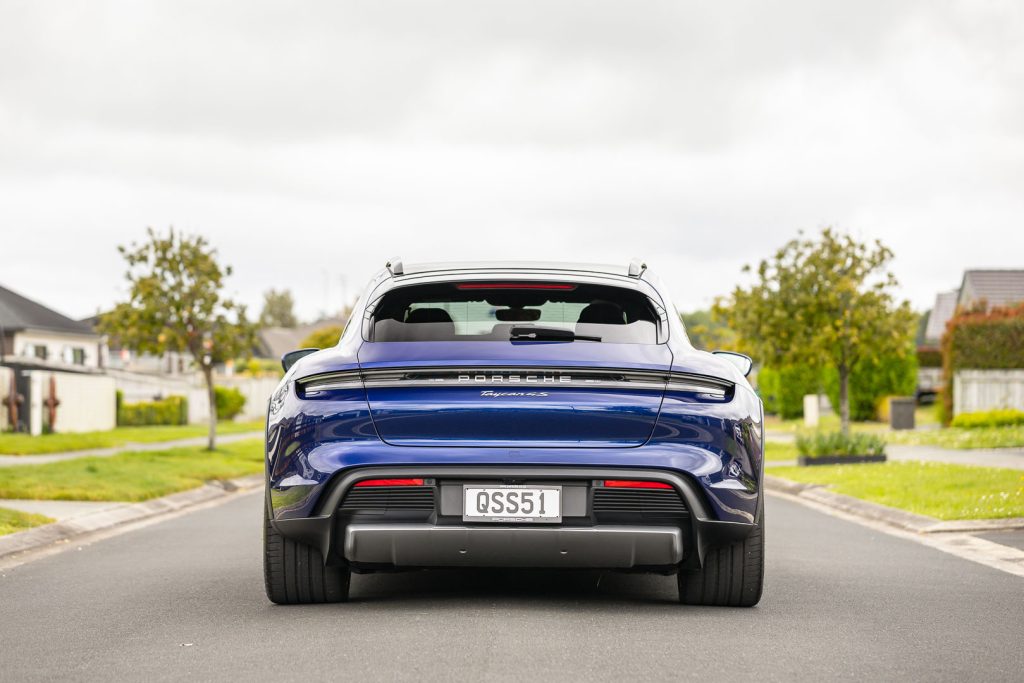
On the Bombay Hyperchargers (300kW) it can rezip from 10 to 80 per cent in 18min.
What’s really the most astonishing aspect of this vehicle dynamically is the way it hides its weight. And despite being almost 5m long, it twists and turns like a much more compact vehicle.
Helping is the fact that most of the weight is slung low within the wheelbase. It’s only really during hard braking that you notice the mass.
At the wheel you soon acclimate here. The only item we kind of missed is traffic sign recognition in the instruments (it’s on the sat nav map).
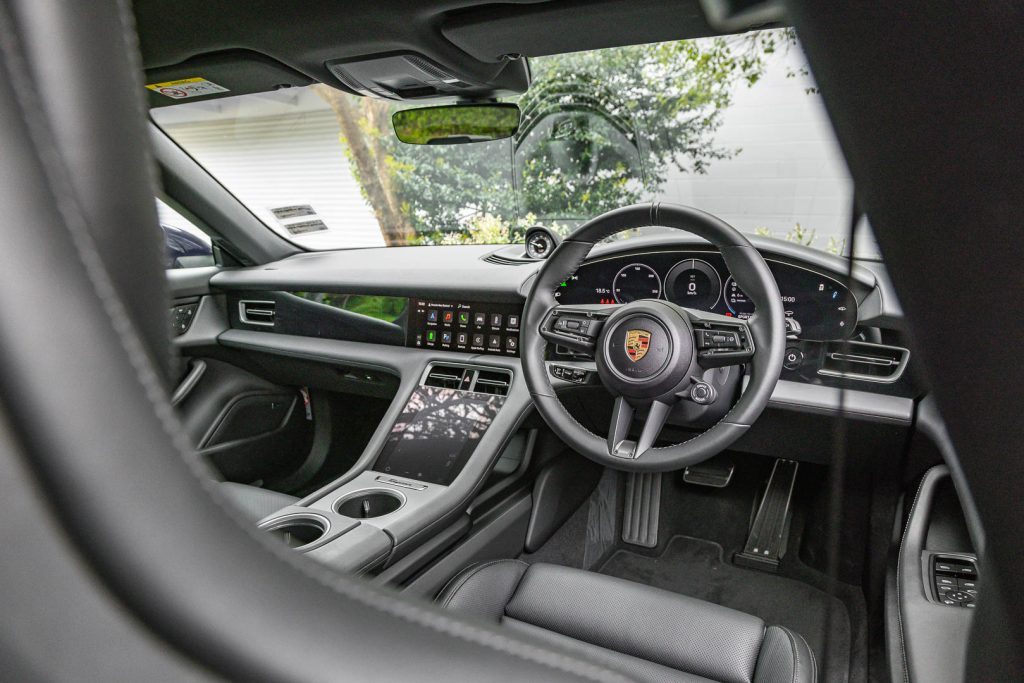
There’s a central screen up high for infotainment and a secondary screen below for climate control. A little track pad some might find useful for operating the IFT screen.
There’s a shortcut for lane keep assist and you can select ESP sport by using a wee touch screen area on the right side of the instruments.
There are no paddles because regen is either on or off, and there are just two gears. You can feel the change happening during max attack under launch control around 90km/h, but normally you don’t notice.
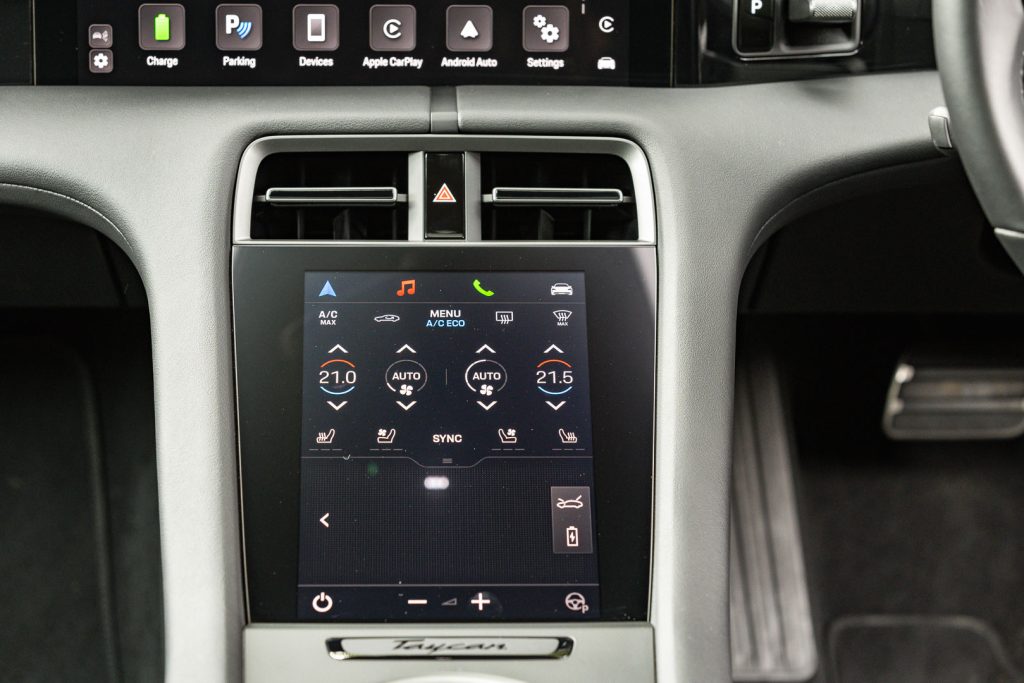
Most seem to choose the Taycan because it looks so ornery and is slightly less of any outlay. So you’d get the Cross Turismo for the 446L-1212L of luggage capacity or the fact it will take two adults easily enough in the rear with its additional headroom.
The luggage space isn’t a whole lot more than the 4 or 4S Taycan which has 407L but access is a bit simpler.
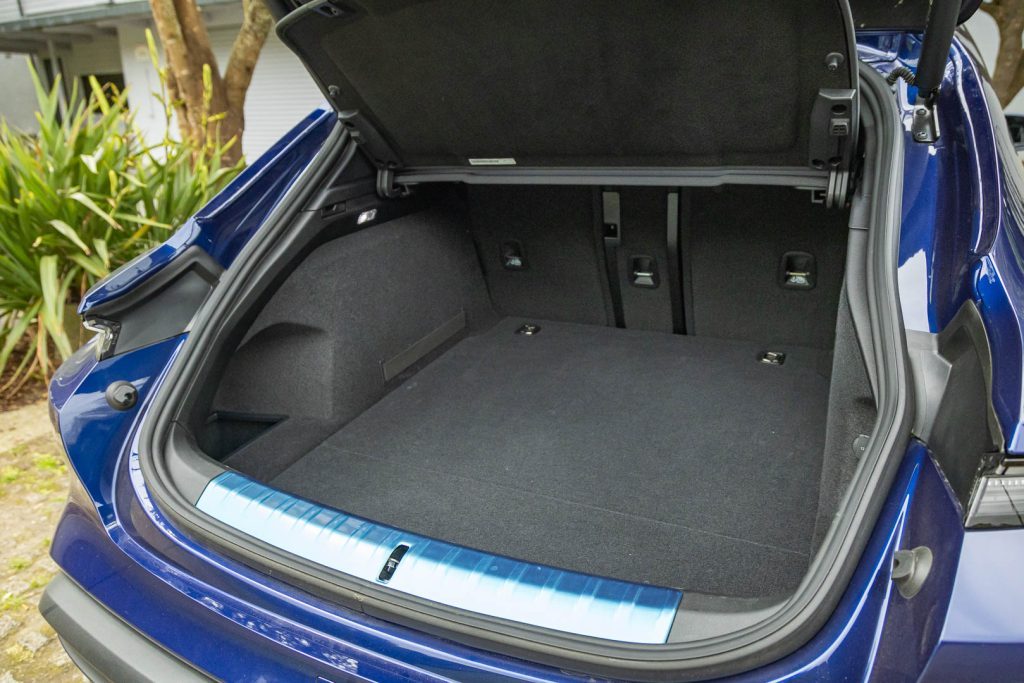
Before signing off, there’s another model we haven’t mentioned but should for completion and that’s the Porsche Taycan Turbo GT.
No, you can’t get this model as a Cross Turismo but it is the fastest production Porsche yet, by far, completing the 0-100 sprint in a claimed 2.3sec.
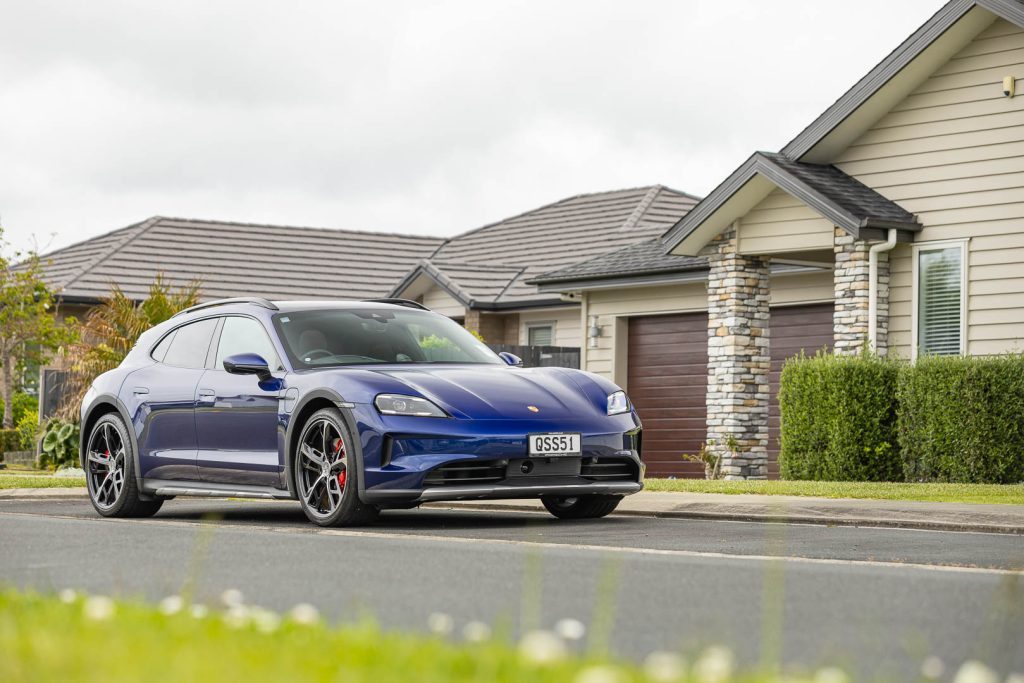
So probably 2sec flat in reality. And 80-120 Porsche quotes at 1.1sec. Which is about 0.4sec quicker than anything we’ve ever performance tested before.
On overboost it makes 760kW and 1240Nm, partly explaining its turn of speed. Oh, and it costs $460k since you’re probably wondering.
| Model | Porsche Taycan 4S Cross Turismo |
| Price | $255,850 |
| Motor | 380kW, 700Nm |
| Battery | 98.0kWh net |
| Range | 517-610km |
| Drivetrain | 2-speed auto, AWD |
| Energy Use | 18.5kWh/100km |
| C02 Output | 0g/km |
| 0-100km/h | 3.31sec |
| 80-120km/h | 1.91sec (55.04m) |
| 100-0km/h | 33.01m |
| Stability systems | ABS, ESP |
| Safety | AEB, ACC, BSM, LDW, RCTA, ALK, AHB |
| Luggage capacity | f-84L r-446-1212L |
| Tow rating | Not rated to tow |
| Service intervals | 24 months, 30,000km |
| Warranty | 5 years, unlimited km |
| ANCAP rating | 5 Stars |
| Weight | 2280kg (claimed) |
This article first appeared in the November 2024 issue of NZ Autocar magazine.


